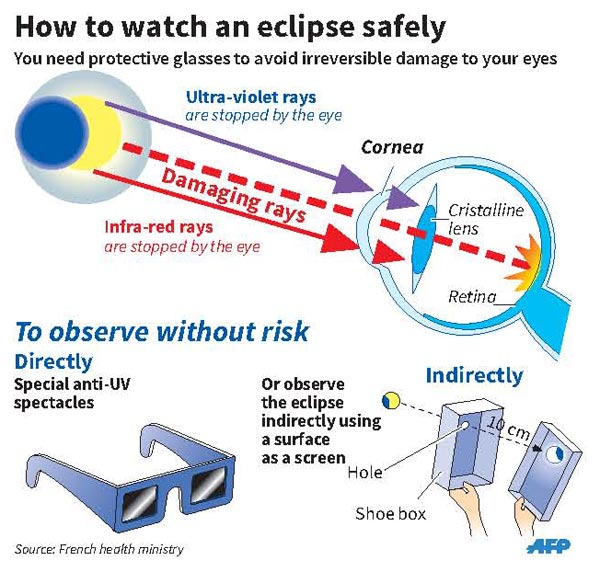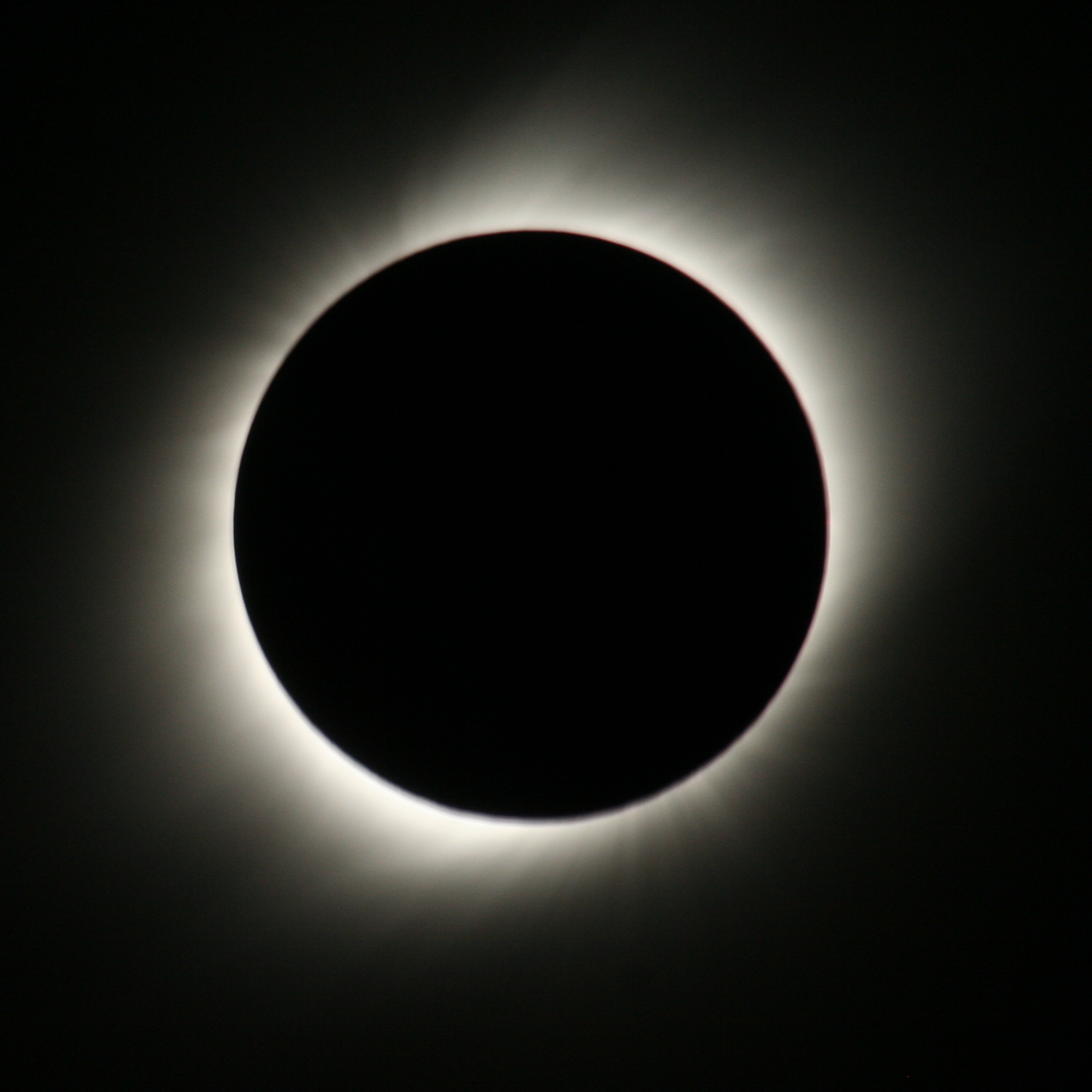Why cant we see the solar eclipse without eye protection?
2 Answers
Our eye have a lens in front of it..This focus the light on the retina.
Explanation:
The concentrated light+UV rays from Sun will burn the retina and make permanent damage to your eye,.During eclipse except the time of totality as light intensity reduces our Iris(Aperture like opening) opens more and allow more light to get in..You will not much pain but later you will feel the damage.
like opening) opens more and allow more light to get in..You will not much pain but later you will feel the damage.
picture credit thebomepost.com.
Looking at the Sun with the naked eye will cause permanent damage to the retina which can cause temporary or permanent blindness.
Explanation:
If the eye is exposed to direct sunlight irreversible damage can occur within seconds. As the retina has no pain receptors the damage will also be painless.
Sunlight contains a fair amount of infra-red light. This heats up the retina which can lead to burning.
Worse still, the intensity os sunlight is such that it overloads the light sensitive cells in the retina. This releases large quantities of free radicals, including oxygen. These free radicals can damage and kill the cells in the retina, causing permanent damage.
All solar eclipses are partial eclipses for most or all of their duration. A partial eclipse is when the Moon only covers part of the Sun's bright surface which is called the photosphere. Even if only a small amount of the photosphere is visible, eye damage can still occur.
The Sun can be viewed safely by reflecting its image onto a white surface. A small hole in a piece of card can be used, or purchase an inexpensive solarscope.
The only way the Sun can be viewed directly with the naked eye or through binoculars, a camera lens or a telescope is by using a solar filter which reduces the Sun's brightness by a factor of over a million. Eclipse glasses use such filters.
If you are able to see a total eclipse, it is safe to view the Sun, even through a lens, when the Moon completely covers the photosphere. This is after the first diamond ring disappears until the second diamond ring starts to appear. In fact during totality you must view the Sun without eye protection otherwise you will miss one of the most beautiful natural events.
I have seen 10 total solar eclipses and I am looking forward to the next one on 2 July 2019 in the South Pacific or Chile. The image is of the total eclipse of 22 July 2009 on a cruise ship South East of Japan.



